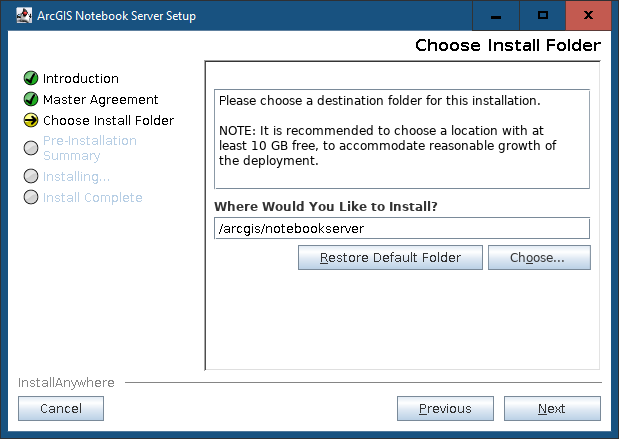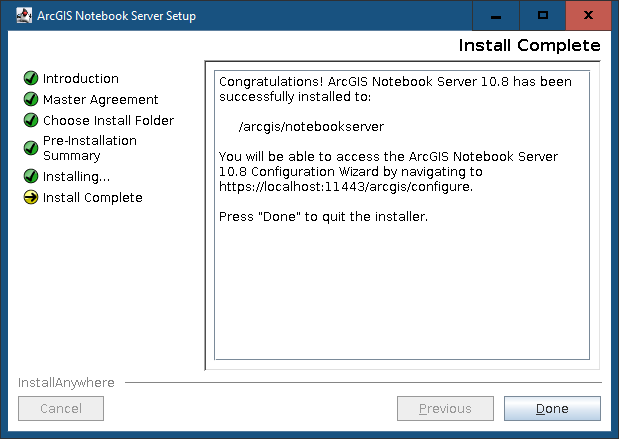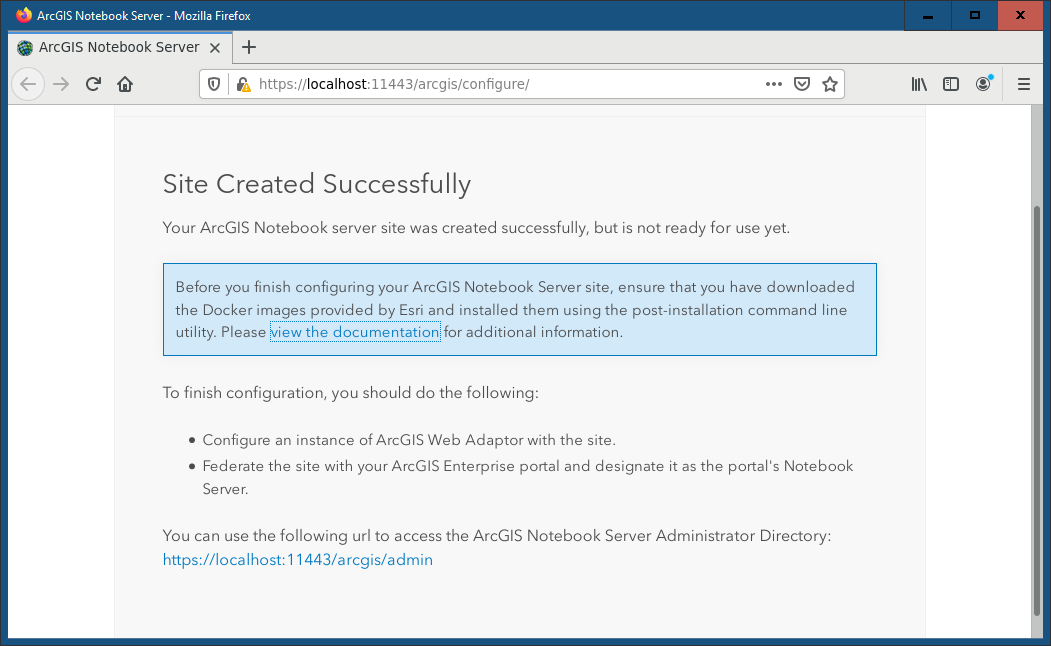Select ArcGIS Enterprise (Linux) 10.8.
Select and download ArcGIS Notebook Server (1.4G).
- ssh as ubuntu user and become root.
- apt-get update
apt-get install apt-transport-https ca-certificates curl gnupg-agent software-properties-common
- curl -fsSL https://download.docker.com/linux/ubuntu/gpg | sudo apt-key add -
- apt-key fingerprint 0EBFCD88
- add-apt-repository "deb [arch=amd64] https://download.docker.com/linux/ubuntu $(lsb_release -cs) stable"
apt-get update
- apt-get install docker-ce docker-ce-cli containerd.io
docker run hello-world
Hello from Docker! This message shows that your installation appears to be working correctly.
- systemctl stop docker.service
- mkdir -p /data/docker
- chmod 755 /var/lib/docker
- mv /var/lib/docker /data/docker
- ln -s /data/docker /var/lib/docker
- systemctl start docker.service


./PostInstallUtility.sh -l /home/arcgis/ArcGIS_Notebook_Docker_Standard_108_172942.tar.gz
Checking Docker health:[OK] Loading Docker image: /home/arcgis/ArcGIS_Notebook_Docker_Standard_108_172942.tar.gz. Apr 03, 2020 8:43:31 PM com.esri.arcgis.turing.tools.PostInstallUtility loadDockerImage INFO: Loading Docker image: /home/arcgis/ArcGIS_Notebook_Docker_Standard_108_172942.tar.gz. Done. Successfully loaded Docker Image /home/arcgis/ArcGIS_Notebook_Docker_Standard_108_172942.tar.gz. Apr 03, 2020 8:45:37 PM com.esri.arcgis.turing.tools.PostInstallUtility loadDockerImage INFO: Done. Successfully loaded Docker Image /home/arcgis/ArcGIS_Notebook_Docker_Standard_108_172942.tar.gz. |


- Use load balancer DNS name for service URL: https://arcgis-n-8.gisdemo.net/arcgis
- Use server name for admin URL: https://arcgis-server-8.gisdemo.net:11443/arcgis
- Select Notebook server from drop down menu. The new entry https://arcgis-n-8.gisdemo.net/arcgis will appear.
- Press Save.